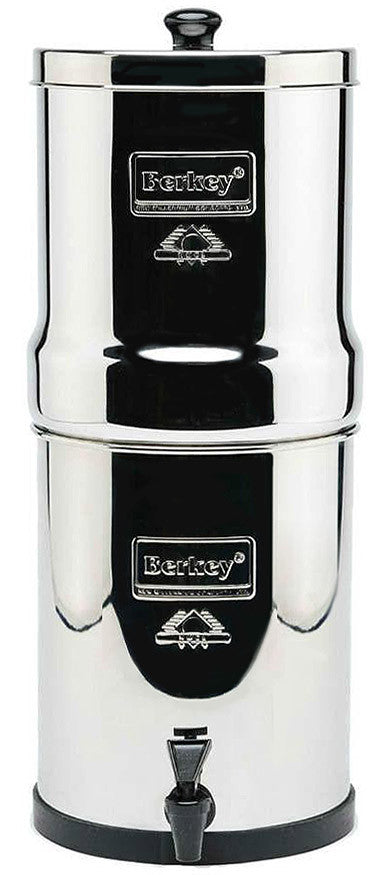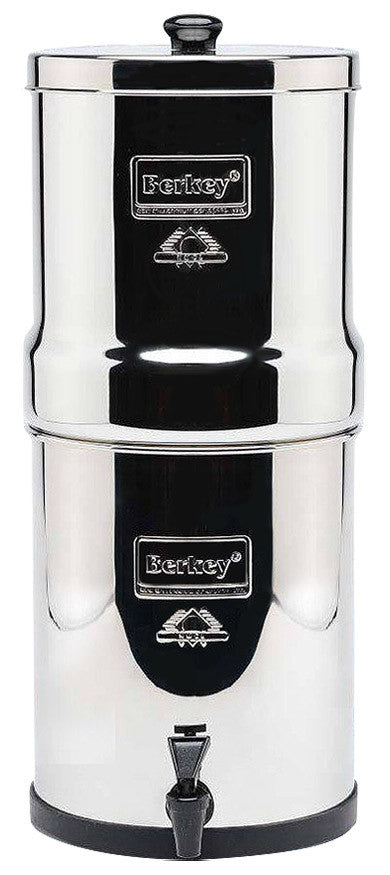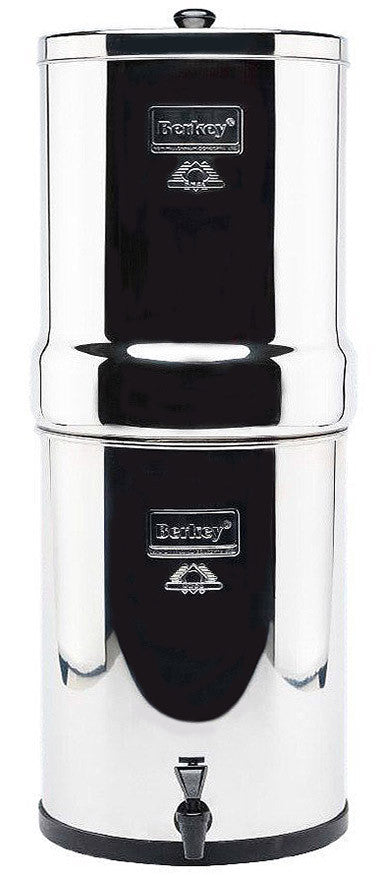
The world's overall water capacity is constant. Nothing is gained or lost. Water experiences a consistent, hydrologic cycle of precipitation, infiltration, runoff, evaporation, and transpiration by plants. Although, uneven distribution of rain at any given time or area can cause shortcomings. Surface water storage is typically uneconomical for outrageous droughts. Variety in precipitation influences surface water supplies right away. Groundwater is influenced all the more gradually. However, it will be decreased by prolonged drought. Everyday home water use differs from 50 to 100 gallons per person every day. The best water use is in the washroom; come second is laundry use. Water conservation is significant during dry seasons, or on the other hand, at whatever point use strains in an overpopulated region.
It is easy to understand why saving water is important, especially in a severe drought place like California. And why neglecting to do so can cost you more money. Yet, regardless of whether your area is getting a lot of rainfall at this moment, water, despite everything, is not free. As per the U.S. Environmental Protection Agency (EPA), the normal American household pays $474 per year for water and sewage charges, or $2 for every 1,000 gallons of water it employs. You are letting your money get down the drain every time you leave your faucet running while you brush your teeth or wash dishes.
The expense of water use is not restricted to what you pay on your water bill either. You are also wasting energy if hot water is flowing down your drain. It adds extra dollars to your monthly gas or electric bill. Heating water records for about 17% of household energy consumption, as per the U.S. Department of Energy. Costing the normal American household somewhere in the range of $400 and $600 per year.
By cutting water use in your household, you can save a greater amount of money in your pocket. Perhaps help fight off the next drought in your area. What's more, much of the time, it takes just a couple of straightforward changes to save the planet and your dollars at once.
Water-saving Devices and Appliances

You can reduce water use in new homes using choosing and installing water-saving devices and appliances. In existing homes, you can adjust the water installations set up to lessen water use. Below is a list of recommendations to reduce water use.
- Faucets and showers— Most faucets and showerheads release more water than should be expected under typical pressure. Including a flow reducer in the water pipe, a low-flow apparatus, or connecting to the current installation reduces water use.
- Toilets— Most older toilet tanks contain more water than needed. Filling plastic containers with water and putting them in the tank lessens the volume of water while keeping up a depth important to give appropriate flushing speed. Try not to use bricks since they can break the tank whenever dropped, or a block may break up and prompt plumbing problems. Toilets are accessible in the market with varied bowls and traps that require less water. Current guidelines demand that new installations use 1.7 gallons per flush or less.
- Pressure-reducing Valves— Excessive pressure can lead to high flow rates and wastes water. A pressure-reducing valve keeps up a sufficient water-supply pressure of 50 pounds for every square inch. Older homes may require higher pressure. Hard water, in this case, has left mineral deposits in the pipes and reduced their diameters.
- Hot Water Pipe Insulation— Leaving a high-temperature water faucet flowing to carry hot water to the tap wastes water and energy. Insulating hot water pipes lessens this waste.
- Point-of-use Water Heaters (quick)— Installing these different units underneath the kitchen and toilet sinks gives you instant hot water. Furthermore, it saves water and power. You don't need to run the tap to wait for the water to get warm. Sizes normally differ from 2 to 4 gallons. The radiators work on typical house voltage (120V), propane, or natural gas.
- Dishwashers and Automatic Clothes Washers— Water-sparing models considerably decrease water usage. Altering older machines is generally not reasonable.
Best Water Conservation Methods for Homeowners
Saving Water Indoors
If you need to eliminate your water use, the best place to begin is at home. Since the home is where you spend the biggest portion of your time – and where you frequently shower, wash dishes, and do laundry– it is the place that gives you the most chances to save.
The EPA says a typical American household of four spends 400 gallons of water a day, and 70% of that is consumed indoors. The bathroom represents the biggest portion of water usage. However, you can likewise save water in any room used, including the kitchen, the pantry, and any room with a plumbing leak.
Find and Fix Leaks

One of the most effective approaches to save water at home is to find and fix plumbing leaks. Indeed, even a little leak can signify large water losses whenever left unfixed. As per the EPA, the average household loses 10,000 gallons of water every year to plumbing leaks. This is enough to wash 270 piles of laundry. About 10% of homes have leaks sufficiently significant to cost them 90 gallons of water for each day,
Fixing minor leaks like leaking valves, dripping faucets, or worn toilet flappers is a simple do-it-your-own work that doesn't need a plumber. As indicated by the EPA, fixing these handily revised leaks can save you around 10% on your water bills. Even better, it prevents those little leaks from turning into large ones that could need a plumber to fix.
One approach to determine if you have any water leaks in your household is to check your water bill throughout the winter months when you are not consuming a ton of water outside. The EPA says that if a group of four is experiencing more than 12,000 gallons every month, that indicates a serious leak problem.
When you know, there is a leak, and you need to find out where it is. You can often distinguish surface leaks by inspecting your faucet gaskets and pipe fittings to check whether there's any water on the outside of the pipe. If you think that your toilet may be leaking, you can check by putting a drop of food coloring into the tank and seeing whether any of the colors has leaked the bowl following 10 minutes. Flush the toilet directly after this experiment to ensure you don't stain the tank.
Once you've recognized a leak, please find a way to fix it. The EPA's WaterSense site also links to different online resources on the best way to fix leaky toilets, faucets, and showerheads.
In the Bathroom
- Turn Off the Faucet. The EPA says a standard bathroom faucet runs at around 2 gallons per minute (GPM). This implies letting the bathroom faucet run for a couple of moments every day while you shave or brush your teeth can cost you as much as 300 gallons per month.
- Take Shorter Showers. A bathtub holds around 36 gallons of water, while a standard showerhead uses about 2.5 gallons of water per minute. That implies that as long as you keep your time in the shower to 14 minutes or less, a shower uses less water than a bath– and the shorter the shower, the more you save. By cutting your everyday shower from 10 minutes to 5 minutes, you can save 375 gallons each month.
- Switch Off the Shower. You can consume even less water in the shower by turning off the water when you don’t use it. Once you've wet yourself down, you can turn off the water while you soap up, shave, or wash your hair, and afterward switch it back on to rinse off. When you can turn off the shower water for only two minutes every day, you can save another 150 gallons per month.
- Improve Showerhead. A change that costs somewhat more first off yet also likely offers possible savings. Replacing your shower head to a low-flow can save you around 15 gallons of water during a brief shower. A brief shower with a low-flow showerhead uses around 12 gallons of water, 1.5 gallons per minute, versus 24-64 gallons with other showerheads.
- Be a Frugal Flusher. If it is yellow, let it mellow. Be a frugal flusher. Flushing your toilet only five times each day with an ordinary toilet utilizes about 3.5-5 gallons for every flush; whenever flushed five times each day, this equals 17.5-25 gallons used! In case you install a high-efficient toilet, five flushes compare to just 6.4 gallons used.
- Use Faucet Aerators. You can modify your bathroom faucets to use less water with a small investment of time and money. A faucet aerator is a simple gadget that costs a few dollars and bends directly into the right spot on the tip of your faucet. Can cut its maximum flow rate from 2.2 GPM to 1.5.
- Change Your Toilet. If the toilets in your house were built before 1990, they could be consuming somewhere in the range of 3.5 to 7 gallons of water with every flush. But there are two or three different ways to decrease this amount without changing the whole toilet. One way is to install a toilet tank bank – a bag loaded up with water that hangs inside the tank, relocating water and reducing the amount it takes to top off the tank.
In the Kitchen
- Wash With Less Water. Rather than letting the water run consistently as you wash dishes, top off the sink or a bowl with hot, soapy water. The EPA says this can cut your water use from 20 gallons to 10 for a sink-load of dishes.
- Fill the Dishwasher. Dishwashers generally differ in the amount of water used. Older dishwashers can use as much as 16 gallons for every load, while new models bearing the ENERGY STAR mark require close to 6 gallons – and use less power also. As indicated by Consumer Reports, modern dishwashers pack enough punch to get dishes clean with no pre-washing, and the EPA says skipping this process can save you as much as 10 gallons of water for every load.
- Update Your Dishwasher. To save significantly more water, change a more established dishwasher with another ENERGY STAR model. This can save you up to 10 gallons for each load– which, if you run your dishwasher around four times each week, indicates more than 2,000 gallons for every year.
- Cook With Less Water. When you cook, pick a pot that is the correct size for the activity. If you pick a pot that is too large, you could wind up using more water than you truly need.
- Try not to Defrost With Water. Rather than running water over food to defrost it, place it in the fridge to defrost for the time being, or, in all likelihood, use your microwave.
- Rinse in a Basin. When you wash produce, please place them in a basin of water instead of running everything under the faucet. Afterward, you may use the water in the basin to water house plants.
- Chill Your Water. Secure a pitcher of drinking water in the fridge. That way, when you need a glass of cold water, you don't have to let the faucet run until the water chills off.
- Avoid the Disposal. Rather than washing vegetable scraps and peels down the waste disposal, throw them in a compost pit to make free fertilizer for your home vegetable garden.
In the Laundry Room
- Wash Only Full Loads. Washing full loads are particularly significant when you have a front-loading washer, which uses a similar amount of water regardless of how full it is.
- Wash Only in Cold Water. Using cold water rather than hot doesn't cut your water consumption, yet it saves a ton of energy.
- Update Your Washer. While older machines use around 40 gallons of water for every load, current ones utilize just 23 gallons for each load.
Saving Water Outdoors
The EPA reports that American households consume roughly 29 billion gallons of water every day. Typically, about 30% of that – 9 billion gallons – is used outside for watering yards and gardens, washing vehicles, and filling pools. In any case, in mid-year or dry climates, families use as much as 70% of their water outside. So, saving water outside can make a considerably greater mark on your water bill than cutting water use indoors throughout the late spring months.
Watering the Lawn

- Adjust for the Weather. In a hot, dry, or breezy climate, your yard needs more water, while in the cooler months, it needs less (or even none). One great general guideline is never to water when the soil is wet; hold up until it's dried out to a depth of about an inch.
- Water in Zones. Since water evaporates all the more rapidly in warm, sunny areas, the bright regions of your yard need more water than the shady parts– about 30% more, as indicated by the California Urban Water Conservation Council (CUWCC). Set up your sprinklers in zones to help avoid wasting water.
- Water Deeply but Occasionally. Your yard will be more beneficial if you give it a decent soaking on occasion instead of only a little water each day.
- Pick Your Time. When you water your yard in the day, a ton of the water will evaporate in the hot sun before it splashes into the soil, and you'll end up watering again sooner. By watering in the cool hours of the night or early morning, you can cut evaporation loss. This can save you as much as 25 gallons each time you water your lawn.
- Position Sprinklers Properly. Sprinklers waste 12 to 15 gallons for every consumption on cleared areas like streets and walkways. Check your sprinklers often to prevent wastage.
- Stop the Flow. When you water your lawn by hand, ensure the spray nozzle on your garden hose has a shut-off valve. That way, you can stop the water while you move the hose from spot to spot instead of letting it keep on running.
- Reuse the Clippings. Rather than stowing up the grass clippings when you mow, leave them on the lawn. As they break down, they return water and nutrients to the soil, diminishing the need for both water and fertilizer.
- Lessen the Lawn Size. Turfgrass is one of the most water-intensive plants you can develop in your yard. By lessening the size of your yard, you can essentially lessen your outdoor water use – just as the measure of time you spend mowing.
← Older Post Newer Post →




